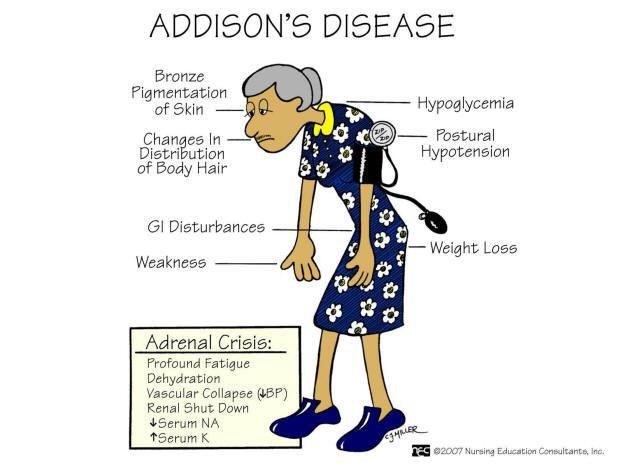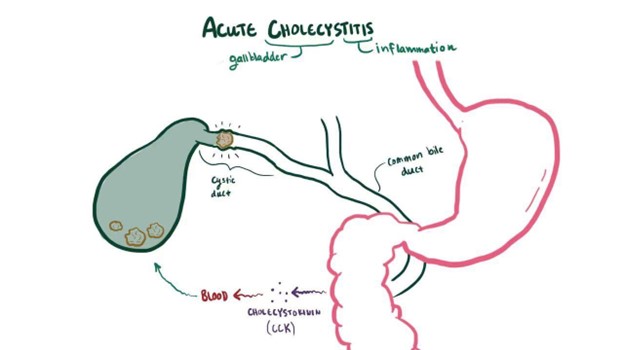Which of the following would be the most appropriate nursing diagnosis for a client admitted with Addison's disease?
Impaired skin integrity
Fluid volume overload
Imbalanced nutrition: more than body requirements
Risk for injury
The Correct Answer is D
Choice A Reason: Impaired skin integrity is not the most appropriate nursing diagnosis for a client with Addison's disease, as it does not reflect the main problem of adrenal insufficiency and cortisol deficiency.
Choice B Reason: Fluid volume overload is not the most appropriate nursing diagnosis for a client with Addison's disease, as it does not reflect the main problem of adrenal insufficiency and aldosterone deficiency.
Choice C Reason: Imbalanced nutrition: more than body requirements is not the most appropriate nursing diagnosis for a client with Addison's disease, as it does not reflect the main problem of adrenal insufficiency and weight loss.
Choice D Reason: Risk for injury is the most appropriate nursing diagnosis for a client with Addison's disease, as it reflects the main problem of adrenal insufficiency and hypotension, which can cause falls, fainting, or shock.

Nursing Test Bank
Naxlex Comprehensive Predictor Exams
Related Questions
Correct Answer is D
Explanation
Choice A Reason: Ice cream is not a good food choice for a client who has cholecystitis, as it is high in fat and may trigger gallbladder pain or inflammation.
Choice B Reason: Blueberry muffin is not a good food choice for a client who has cholecystitis, as it may contain butter, oil, or eggs that are high in fat and may aggravate gallbladder symptoms.
Choice C Reason: Macaroni and cheese is not a good food choice for a client who has cholecystitis, as it is high in fat and cholesterol and may cause gallstone formation or obstruction.
Choice D Reason: Roast turkey is a good food choice for a client who has cholecystitis, as it is low in fat and high in protein and may help to prevent gallbladder attacks.

Correct Answer is C
Explanation
Choice A Reason: Cushing's is not an expected health problem in a client with high potassium level, as it causes low potassium level due to excess cortisol and aldosterone production.
Choice B Reason: Diabetes insipidus is not an expected health problem in a client with high potassium level, as it causes low potassium level due to excessive water loss and dilution of blood.
Choice C Reason: Addison's is an expected health problem in a client with high potassium level, as it causes high potassium level due to insufficient cortisol and aldosterone production.
Choice D Reason: Diarrhea is not an expected health problem in a client with high potassium level, as it causes low potassium level due to excessive fluid and electrolyte loss.
Whether you are a student looking to ace your exams or a practicing nurse seeking to enhance your expertise , our nursing education contents will empower you with the confidence and competence to make a difference in the lives of patients and become a respected leader in the healthcare field.
Visit Naxlex, invest in your future and unlock endless possibilities with our unparalleled nursing education contents today
Report Wrong Answer on the Current Question
Do you disagree with the answer? If yes, what is your expected answer? Explain.
Kindly be descriptive with the issue you are facing.
